What are Variegated Plants?
Learn what makes variegated plants multicolored, how to care for them and whether you can make a plant turn variegated. Plus, find some of our favorite variegated indoor and outdoor plants.

Discovering variegated plants is like uncovering a hidden treasure in the gardening world. Once you find them, there's no going back. Whether you're choosing new houseplants, sprucing up outdoor containers, or seeking standout additions for your garden, you'll find yourself naturally gravitating toward the allure of variegated foliage. There's something undeniably cool about the patterns of dots, stripes and unique markings that give each plant a distinct, tropical vibe. They effortlessly introduce depth and character to any space, making it vibrant without the need for bright blooms or elaborate flowers.
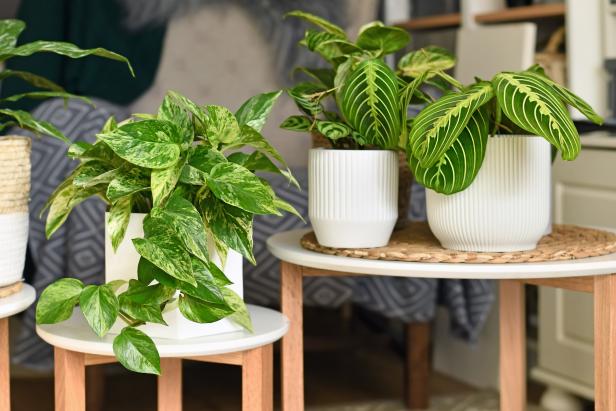
Firn
What are Variegated Plants?
Variegated plants feature leaves and foliage with a mix of colors (aka, anything not solid). This could include leaves that are striped, blotched or adorned with unique patterns. A familiar example of a variegated plant is the hosta. You can find dozens of varieties with striped, spotted or patterned foliage.
Variegated plants have a distinctive beauty, making them highly sought after by gardeners. Their unique appeal has led to a growing number of variegated plants available for all types of gardens, including indoor and outdoor settings, perennials, annuals, trees and shrubs.
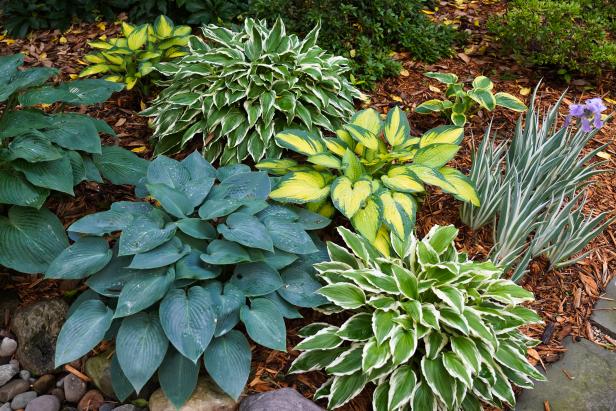
Ana Larkin
Hostas are some of the most popular variegated plants.
How Do Plants Become Variegated?
The reasons behind plant variegation are fascinating. One cause is a genetic mutation affecting chlorophyll production, the pigment responsible for plants' green color. In such cases, certain areas of the plant lack green pigment, which accounts for the variegated appearance.
Other sources of variegation are natural genetic traits, which are part of the plant’s DNA, and viral infections, which can be related to disease.
Variegated Plant Care
Variegated plants bring a unique splash of color and pattern to our homes and gardens, and it's important to remember that each type has its own set of needs. Remember this as you look at the different species to grow — you’ll want to care for that specific plant, not just variegated species in general. But there are some commonalities between variegated plants and the care they require.
One key thing to note about variegated plants is their need for a bit more light. This is because they have less chlorophyll, which helps them with photosynthesis. Bright, indirect sunlight usually hits the spot perfectly. When it comes to temperature, especially with variegated houseplants, a cozy range between 65 and 75 degrees Fahrenheit usually keeps them happy.
Watering varies among different types of plants. A useful tip is to wait until the top inch of soil feels dry before giving them a drink. It's easy to overdo it with water, which can lead to issues like root rot. To also help avoid this, ensure you're using well-draining soil and pots.
Just like any other plant, variegated beauties can attract their share of insects and diseases. Keeping them in a spot with good airflow can help prevent these problems. And if you do spot any pesky bugs, addressing them quickly will help keep all your plants, variegated or not, in great shape.
13 Ways to Handle Houseplant Problems 13 Photos
Most houseplants are tough and trouble-free, but problems can pop up. Find solutions to keep your potted beauties healthy and happy.
How to Propagate a Variegated Plant
Perhaps you've got a variegated plant that's caught the eye of a friend, or you've noticed one of your greens developing those intriguing multicolored patterns and wish to nurture this change. In either scenario, you're perfectly positioned to propagate your unique plant using familiar cutting techniques.
Should you spot a new shoot sprouting from your plant, take the opportunity to pot it separately, nurturing the birth of a new plant. Alternatively, if a shoot isn't available, snip a cutting from the stem and try to root it yourself. If you want to increase your chance of success, consider using a rooting hormone to help it along. Ensure the cutting's end remains moist to encourage the development of new roots, preparing it for its own spot in the soil.
For those who want to intensify the variegation of their plant, light can help. Given that variegation arises from a reduction in chlorophyll, positioning your plant in a brightly lit area becomes crucial. A sunny spot, coupled with well-drained soil and consistent watering, minimizes stress, allowing the plant's vibrant hues to shine through.
Can a Plain Plant Become Variegated?
It is possible to venture into the realm of turning a non-variegated plant into a variegated one through experimentation. This advanced process involves delving into the intricacies of plant DNA, gene splicing and other techniques. However, it's important to approach such things with caution. Improper techniques can significantly affect the health and well-being of your plant. So instead, focus on discovering the unique variegated species that already exist.
Popular Indoor + Outdoor Variegated Plants
Variegated plants seem to be everywhere with new varieties making their debut every year. They've become a favorite among gardeners, both for indoor spaces and container gardening, offering a fun way to sprinkle in color and texture. It's always a good idea to embark on a little exploration of variegated species yourself. Whenever a plant catches your eye in a garden or at your local garden center, take a moment to learn its name so you can figure out if it’ll work in your space.
Indoor Variegated Plants
Monstera (Monstera) This houseplant pops up all over social media for its unique foliage and sometimes holey leaves. A couple of the most popular ones include varieties ‘Albo variegata’ and ‘Thai Constellation.’

Devonyeae Calbert
Monstera Deliciosa
Caladium (Caladium bicolor) You can find dozens of caladiums with variegated foliage, and you can grow them as houseplants or in warmer months as annuals. They are known for their heart-shaped leaves.

Chris Brown Photography, Proven Winners
Caladiums surrounded by a snake plant, ferns and Persian shield
Polka Dot Begonia (Begonia maculata) Love polka dots? This gorgeous plant is for you. Give it warm, tropical-like conditions to keep it happy. Find more polka dot begonia growing tips >>
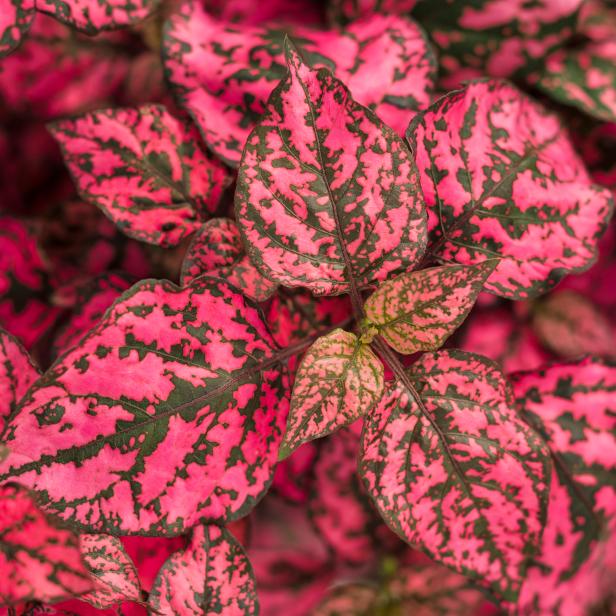
ProvenWinners.com
Polka-Dot Plant
Picasso Peace Lily (Spathiphyllum Picasso) This can be challenging to find at an affordable price, but gardeners like it because it’s low-maintenance and looks incredible.
Prayer Plant (Maranta leuconeura) This plant is a popular housewarming gift, and it’s good for both beginners and experts. Its unique appeal lies in its beautifully patterned leaves, which fold up in the evening as if in prayer. Find more prayer plant growing tips >>
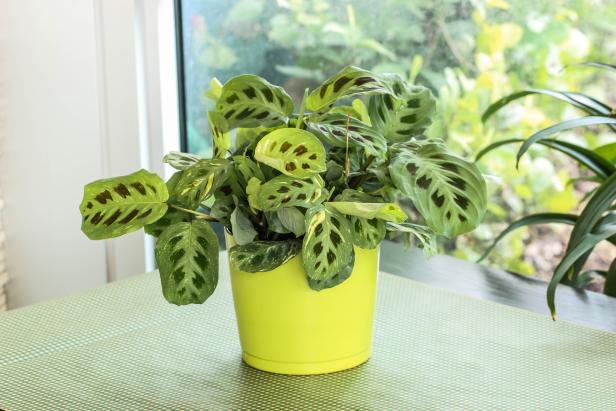
Costa Farms
Prayer Plant
Outdoor Variegated Plants
Silver Heart Brunnera (Brunnera macrophylla) This shade-loving perennial is known for its heart-shaped leaves adorned with a frosty silver overlay and delicate blue flowers that bloom in spring.

PerennialResource.com
Brunnera
Japanese Forest Grass (Hakonechloa macra) This graceful ornamental grass that features cascading leaves in vibrant shades of green and gold brings a soft texture and a sense of movement to garden borders and paths.

DoreenWynja.com photographer for Monrovia
Japanese Forest Grass
Lily Turf (Liriope muscari) This hardy, low-maintenance ground cover is known for its grass-like foliage and spikes of vibrant purple flowers. It offers year-round interest and is great for multiple garden settings.
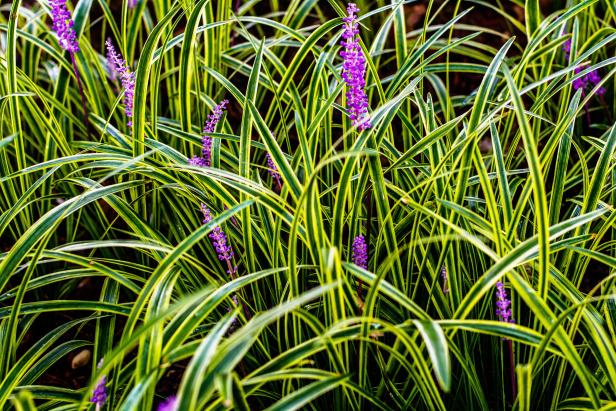
Shutterstock/Elana Rodina
Variegated Lily Turf (Liriope)
Hosta (Hosta) For your shade garden, consider planting Hosta varieties such as 'Patriot' with its bold, variegated leaves; 'Rainbow’s End' for its dynamic, colorful patterns; 'Magic Island' with its enchanting blue-green hues; and 'June', celebrated for its resilience and beautiful leaf variegation.
19 Great Hosta Varieties for Your Garden 19 Photos
This shade-loving plant comes in a head-spinning array of hues and sizes.
Tricolor Sage (Salvia officinalis) This is a gardening favorite because of its variegated leaves in shades of green, white and purple.

MostSecretGarden
Variegated Sage
20 Plant Decorating Ideas 21 Photos
Houseplants can add texture, style and vibrancy to your interior design. Check out some of our favorite creative ways of styling with houseplants.

.-Battle-on-the-Beach-courtesy-of-HGTV.-.jpg.rend.hgtvcom.196.196.suffix/1714761529029.jpeg)





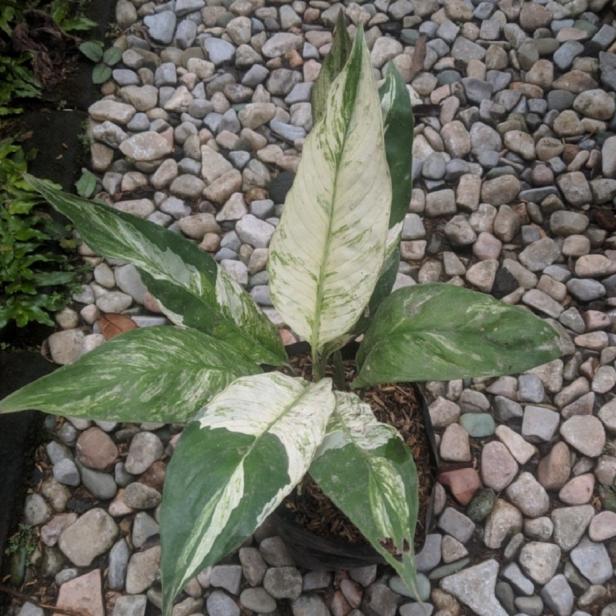
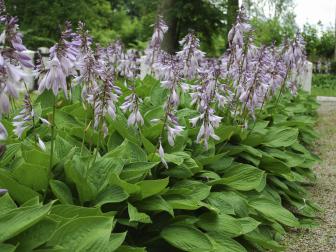





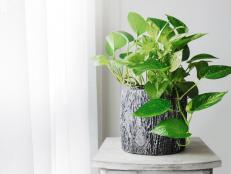
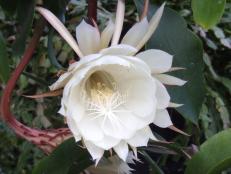

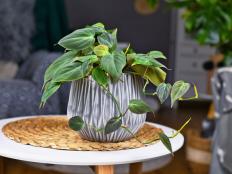

.jpg.rend.hgtvcom.231.174.suffix/1716908436155.jpeg)





























